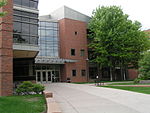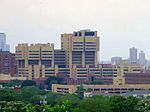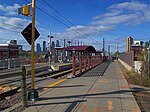Milwaukee Avenue Historic District

The Milwaukee Avenue Historic District is a historic district in the Seward neighborhood of Minneapolis. The district comprises two city blocks of small homes on quarter-sized lots. These houses were built between 1884 and 1890 by William Ragan, a Minneapolis real estate speculator. Built for lower-income residents, the houses had deteriorated in condition by the end of World War II, and by the 1970s, were planned for demolition. A group of residents and concerned citizens fought to save the houses, eventually leading to their inclusion on the National Register of Historic Places and the federal protection and rehabilitation that comes with the designation. Today, the houses sit along a bike- and pedestrian-friendly mall on which motor traffic is prohibited.
Excerpt from the Wikipedia article Milwaukee Avenue Historic District (License: CC BY-SA 3.0, Authors, Images).Milwaukee Avenue Historic District
Milwaukee Avenue South, Minneapolis Seward
Geographical coordinates (GPS) Address Nearby Places Show on map
Geographical coordinates (GPS)
| Latitude | Longitude |
|---|---|
| N 44.960833333333 ° | E -93.24 ° |
Address
Milwaukee Avenue South 2201
55404 Minneapolis, Seward
Minnesota, United States
Open on Google Maps







